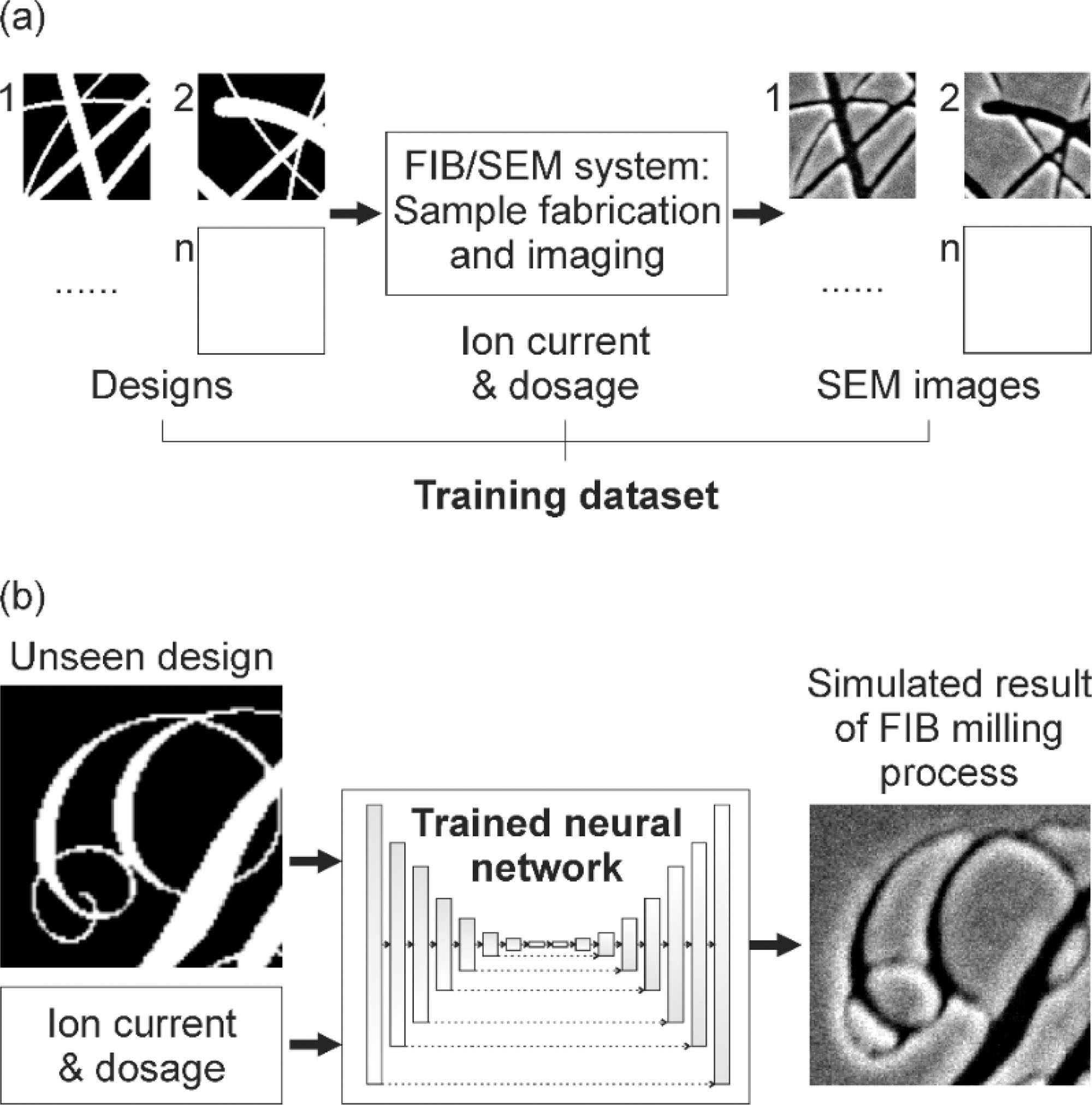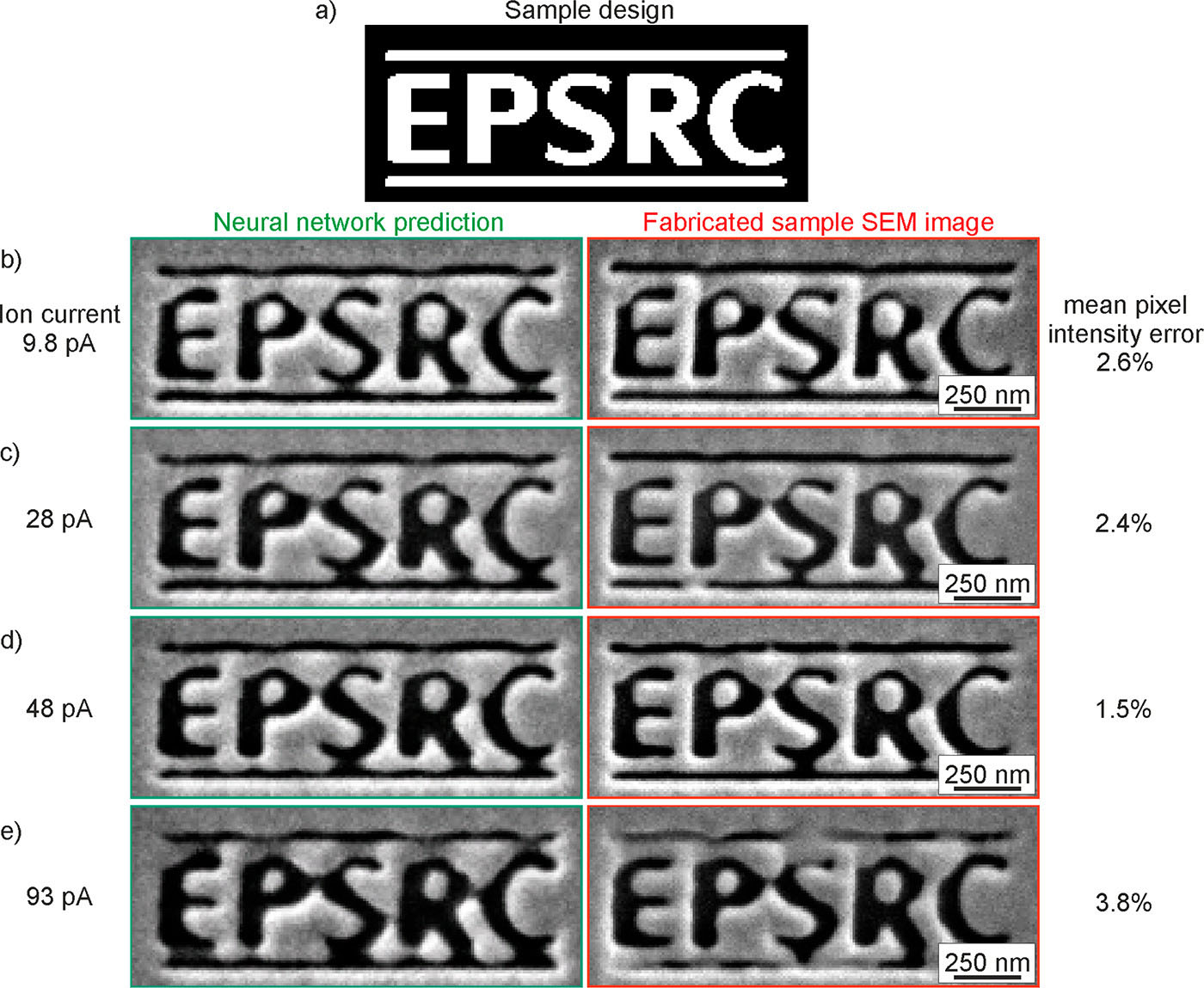| Mar 26, 2022 |
How deep learning can assist focused ion beam nanofabrication
(Nanowerk News) Focused Ion-Beam (FIB) milling is a nanoscale, direct-write fabrication technique where the removal of of material from a target surface is induced by a focused ion beam. It is a popular and versatile approach for creating structures on scales of about 10-100 nm, in particular in the semiconductor industry.
|
|
The work product of any FIB milling process is the result of a complex function of beam current, spot size, scan pattern, target material characteristics, and design geometry, especially the aspect ratio of the pattern.
|
|
Given this great complexity, the problem for researchers and industrial users alike is the development of a comprehensive analytical model that describes the physical processes occurring during milling. Lacking such a model invariably requires time-consuming, trial-and-error testing to establish optimal process parameters for achieving the intended outcome of a given milling operation on a given target.
|
|
In new work published in Nano Letters ("Deep-Learning-Assisted Focused Ion Beam Nanofabrication"), researchers show that deep learning can be used to simulate the postfabrication appearance of structures manufactured by FIB milling in the 2D projection of a scanning electron microscope image, as a very good indicator of process accuracy and quality.
|
 |
| Deep learning simulation of FIB milling. (a) Neural network is trained on a set of binary design patterns, corresponding SEM images of samples manufactured by FIB milling, and detail of the ion beam parameters used in their production. (b) Trained network is then able to accurately predict the outcome of FIB milling processes – the expected postfabrication appearance of samples in SEM imaging – for previously unseen designs. (Reprinted with permission by American Chemical Society)
|
|
With each prediction generated on millisecond time scales, the approach can be deployed to reproducibility and precision in FIB manufacturing processes.
|
|
In their proof-of-principle study, the researchers trained a neural network to simulate a specific type of FIB milling task on a specific target medium, while varying only ion current and dosage (i.e., keeping all other system parameters constant).
|
|
They note that in practice, one would train the network to the task(s) at hand (i.e., according to application context, such as in semiconductor wafer-based device characterization or in nanofabrication for plasmonics research), on a relevant variety of target materials, and with a full range of substrate and system metadata (e.g., film deposition methods, rates and thickness, crystal orientations, etc.; ion current, dosage, raster scan pattern, number of repetitions, ion source, aperture age, etc.).
|
|
In this way, the network would accrue an 'understanding' of the complex relationships among the numerous sample and system parameters that affect process outcomes.
|
 |
| Comparison between neural network-predicted (left column) and actual FIB-milled sample SEM images (right column) for the EPSRC logo: (a) the binary design, and images with ion beam current (aperture) settings of (b) 9.8, (c) 28, (d) 48, and (e) 93 pA. (Reprinted with permission by American Chemical Society)
|
|
The authors conclude that there appears to be considerable scope for functional enhancement of FIB/SEM systems, as integrated micro/nanomanufacturing and sample characterization (i.e., fabrication and in situ diagnostic) platforms, through the application of machine learning methodologies.
|
|
For example, families of materials have similar physical properties derived from similarities in composition and atomic/molecular structure and neural networks are highly effective at discovering such patterns in complex, multidimensional data sets; consequently they can similarly 'learn' that there are relationships among types of material
|


 By
Michael
Berger
– Michael is author of three books by the Royal Society of Chemistry:
Nano-Society: Pushing the Boundaries of Technology,
Nanotechnology: The Future is Tiny, and
Nanoengineering: The Skills and Tools Making Technology Invisible
Copyright ©
Nanowerk LLC
By
Michael
Berger
– Michael is author of three books by the Royal Society of Chemistry:
Nano-Society: Pushing the Boundaries of Technology,
Nanotechnology: The Future is Tiny, and
Nanoengineering: The Skills and Tools Making Technology Invisible
Copyright ©
Nanowerk LLC
